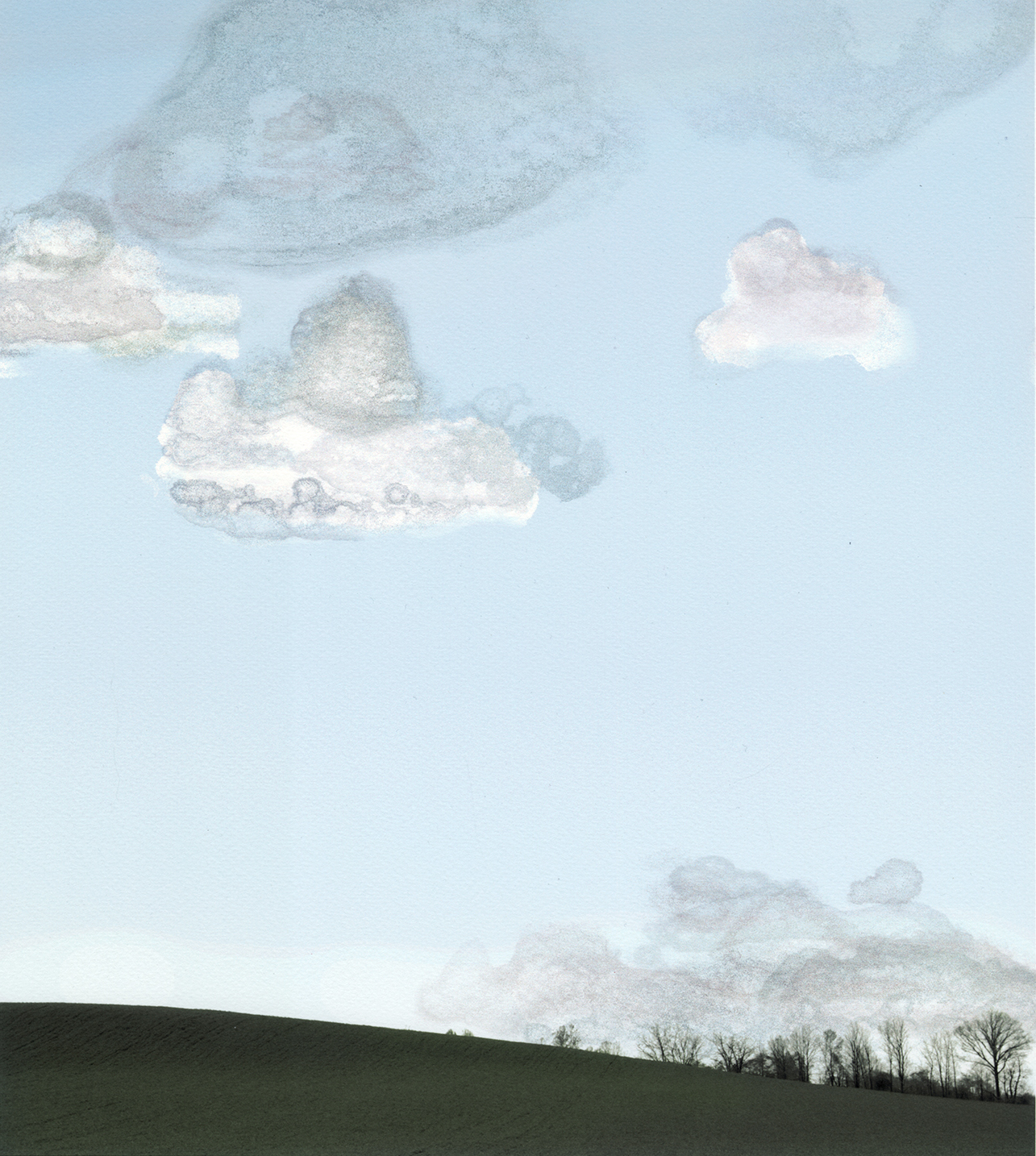With the new year I've decided it's time to revisit some projects that I had put on the back burner. This month I went to the silkscreen studio to continue work on a print that has been in limbo for a while. Yesterday I added two more colors to a print I'm calling Snowy Pines, for lack of a better name at the moment. The sky was the first color I printed as a woodblock, and five layers of silkscreen separations sit above that. I’m not sure it’s finished yet… my original mock-up calls for a few additional colors, so I’m going to sit with it a while and see. The image is based on a photo I took at Stratton Mountain in Vermont. Some of the other photos from the trip can be found here in a post from 2014.
The sixth color of Snowy Pines on the drying rack in the silkscreen studio
Snowy Pines is the third print in a series I’ve been creating with groups of trees as my subject. I begin the work with photographs I've taken and select one that I digitally separate it into fields of color. Some of my best photos have been shot with fairly crappy cameras that happen to fit in my pocket. I’ve found the most important factor for me is not how good my camera is, but rather if I have a camera at all! I happen upon most of these scenes at unexpected times, like this image that I took while snowboarding. There are some limitations to what I can do with the digital images at a low resolution, but the great thing about printmaking is that you can recreate the image in ways you can’t necessarily do with pixels.
The first color printed as a woodblock
I’ve been printing this series using woodblock and silkscreen because I find each medium has its advantages. Woodblock gives a beautiful ground color that is easier to control in large block areas, and it has the added benefit of textural elements like wood grain or the recesses that hold ink and get transferred in the process. Silkscreen is smooth and uniform (when you get a good pull), and it layers beautifully with endless variations in color and opacity. I’m considering mixing in some digital printing with future prints. The next one up is Three Topiary Trees from a photo taken in Olean, NY. I think I’ll mix up the scale with this one and do something a little smaller. My goal is to make one or two of these prints a year and see what they look like as a collection many years from now. It’s sure to be a very colorful series!
Me in the silkscreen studio with sunlight streaming through the window after completing two addtional colors


















